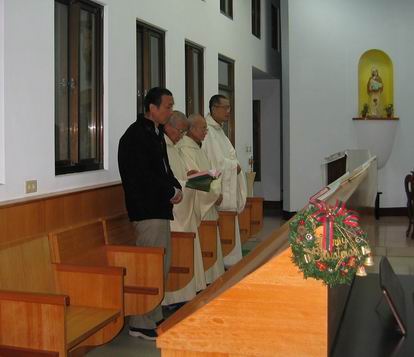|
 |
3. Manual Labor
Manual Labor is defined as physical or mental
effort exerted to do or make something; as purposeful activity; as a
work in which one¡¦s knowledge and skills are utilized.
The Desert Christians of the 3rd, 4th, and 5th
centuries, in Egypt, Syria, and Palestine, manifested a healthy and
deeply insightful appreciation of work. One of the great wisdom
figures of this Desert tradition was St. Antony (251¡V356), who,
though obviously valuing manual labor, linked it with the important
work of meditation and prayer.
¡@ |
|
Among the wisdom sayings associated with St. Antony
is one in which he advises: ¡§When you sit in your cell, be
perpetually solicitous of these three things, namely, the work of
your hands, the meditation of your psalms, and prayer.¡¨
¡@ |
|
In the Benedictine monastic tradition, the prayer
of the monks was called the Opus Dei, meaning, ¡§the Work of
God.¡¨ This prayer of praise to God throughout the day and night was
considered the chief work of the monks, as well as the place where
God worked on the monks themselves. Within this context of
individual prayer and communal singing of the Divine Office, manual
labor and intellectual activities formed an overall rhythm of life
in the monastery. The Rule of St. Benedict affirms a basic tenet
regarding work from Christianity¡¦s earliest days: ¡§Work is an
important antidote to idleness.¡¨ As the Rule expresses it: ¡§Idleness
is the enemy of the soul. Therefore, the brothers should have
specified periods for manual labor as well as for prayerful reading¡¨
(RB 48:1). The Rule of St. Benedict offers an example of a Christian
spirituality that sees work, prayer, study, and contemplation as
intertwined, all directed to praising God. It also contains a
guiding principle that eventually made Benedictine spirituality one
of the most popular of the Middle Ages and from which we might
learn: ¡§All things are to be done with moderation ¡K¡¨ (RB 48:9),
including one¡¦s work.
At the monastery of Shuili, we carry out various
types of work. You will find us working in our orchard, library,
kitchen, retreat house and so on. We support ourselves and improve
our circumstances through the work of our hands. |




